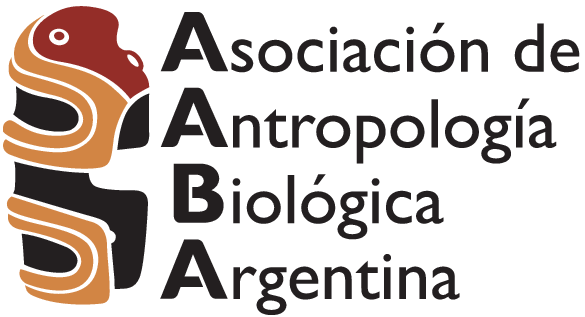Changes in the frequency of food consumption and nutritional status in farmers of Yaguajay, central Cuba, 2017-2022
DOI:
https://doi.org/10.24215/18536387e069Keywords:
diet, body mass index, waist circumference, general healthAbstract
The crisis triggered by the COVID-19 pandemic affected the nutrition and general health status in the agricultural sector and its workforce. The objective of this research is to describe changes in food consumption frequency and nutritional status in 16 farmers from the rural community of La Picadora, taking into account that the impact of the economic and epidemiological situation may have produced changes during this period. A follow-up descriptive study was carried out between October
2017 and April 2022. This included interviews, food consumption frequency questionnaires, and anthropometric measurement. Discrete initial (2017) and final (2022) variables were compared using the Wilcoxon signed-rank statistical test and continuous variables were contrasted using the Student t test for paired samples. The differences were statistically significant regarding the decrease in the frequency of consumption of pasta, pork, organ meats, industrial soft drinks and sweets, and the increase in the frequency of consumption of vegetable fat. A trend of increased weight, body mass index, and waist circumference and decreased height was observed, with significant changes in height and waist circumference. Diet in 2022 was less diverse than in 2017. Changes in dietary pattern and lifestyles during the COVID-19 pandemic were identified as risk factors for increased central adiposity in normal-weight and overweight farmers. Anthropometric measurements proved useful in the assessment of nutritional status of rural agricultural populations.
Downloads
Metrics
References
Agudín Sánchez, O. y Pérez Pérez, L. (2016). La cría de animales y la agricultura en La Picadora. En I. de Oliveira Noronha., V. Vázquez Sánchez, y A. Rangel Rivero. (Eds.), El patrimonio de las comunidades rurales: Experiencias en La Picadora, Cuba e Itatiaiuçu, Brasil (16.a-25.a ed., pp. 40-47). Fundación Fernando Ortiz.
Alicandro, G., Grande, E., Sebastiani, G., Violante, F. S., La Vecchia, C. y Frova, L. (2021). Mortality from suicide among agricultural, fishery, forestry and hunting workers in Italy and the contribution of work-related factors. Occupational and Environmental Medicine, 78(2), 117. https://doi.org/10.1136/oemed-2020-106743
Asociación Médica Mundial. (2013). Declaración de Helsinki de la Asociación Médica Mundial. Principios
éticos para la investigación médica con seres humanos. JAMA, 310(20), 2191-2194. https://doi.org/10.1001/jama.2013.281053
Barrial Martínez, A. M. y Barrial Martínez, A. M. (2011). La educación alimentaria y nutricional desde una dimensión sociocultural como contribución a la seguridad alimentaria y nutricional. Contribuciones a las Ciencias Sociales. http://www.eumed.net/rev/cccss/16/bmbm.html
Bochtis, D., Benos, L., Lampridi, M., Marinoudi, V., Pearson, S. y Sørensen, C. G. (2020). Agricultural workforce crisis in light of the COVID-19 pandemic. Sustainability, 12(19), 8212. https://doi.org/10.3390/su12198212
Borroto, D., Brito, I., Hernández, I. y Borroto D. (2019). History of the Yaguajay sugar industry: From 1600 to today. En V. Vázquez Sánchez, y A. Rangel Rivero (Comps.), La Picadora: People and Nature in a Rural Cuban Community (pp. 16-35). Fundación Fernando Ortiz.
Castro, A. (2020). Respuesta a la pandemia de COVID-19 en poblaciones urbano-marginales y rurales en América Latina. Programa De Las Naciones Unidas Para El Desarrollo (UNDP). https://www.undp.org/es/latin-america/blog/respuesta-la-pandemia-de-covid-19-en-poblaciones-urbano-marginales-y-rurales-en-am%C3%A9rica-latina
Colectivo de autores. (2014). III Encuesta nacional de factores de riesgo y actividades preventivas de enfermedades
no trasmisibles. Cuba 2010-2011 – ECIMED. Centro Editorial Ciencias Médicas. http://www.ecimed.sld.cu/2014/08/07/1897/
Colectivo de autores. (2017). La cadena de valor de la leche vacuna en Cuba. Estudio de su situación en siete municipios de las provincias de Sancti Spíritus y Villa Clara. Programa de las Naciones Unidas para el Desarrollo.
Comisión Nacional de Seguridad y Salud en el Trabajo. (2008). Enfermedades profesionales de los agricultores.
Grupo de Trabajo “Sector Agrario”. Universidad Complutense de Madrid. https://www.ucm.es/data/cont/media/www/pag-56437/enfermedades%20profesionales%20de%20los%20agricultores.pdf
Conroy Ferreccio, G. (2017). Sesgos en la medición del índice de masa corporal en adultos mayores. Nutrición Hospitalaria, 34(1), 251. http://dx.doi.org/10.20960/nh.1002
Demakakos, P. (2021). Importance of population-based longitudinal studies to understanding the impact of COVID-19. Journal of Epidemiology & Community Health, 75(9), 815-816. https://doi.org/10.1136/jech-2021-217114
Díaz Sánchez, M. E. (2011). ¿Antropología de la alimentación o de la nutrición? Catauro. Revista Cubana de Antropología, 12(23), 13-28.
Díaz Sánchez, M. E., Maldonado, G., Suarez Medina, R. y Varona Pérez, P. (2022). Nuevos datos sobre el sobrepeso y la obesidad en Cuba (p. 7). Convención Internacional de Salud, Cuba Salud: https://convencionsalud.sld.cu/index.php/convencionsalud22/2022/paper/download/2123/945
Du, L., Hong, F., Luo, P., Wang, Z., Zeng, Q., Guan, H., Liu, H., Yuan, Z., Xu, D., Nie, F. y Wang, J. (2022). The relationship between occupational physical activity and dyslipidaemia in farmers with varying working modes in southwest China: The China multi-ethnic cohort study. BMC Public Health, 22(1), 840. https://doi.org/10.1186/s12889-022-13266-x
Du, T., Yu, X., Zhang, J. y Sun, X. (2015). Lipid accumulation product and visceral adiposity index are effective markers for identifying the metabolically obese normal-weight phenotype. Acta Diabetologica, 52(5), 855-863. https://doi.org/10.1007/s00592-015-0715-2
Food and Agriculture Organization of the United Nations. (2022). The state of food security and nutrition in the world 2022. https://doi.org/10.4060/cc0639en
Frank, A. L., McKnight, R., Kirkhorn, S. R. y Gunderson, P. (2004). Issues of agricultural safety and health. Annual Review of Public Health, 25(1), 225-245. https://doi.org/10.1146/annurev.publhealth.25.101802.123007
Fundora García, A. (2017). La libreta de abastecimiento en la cotidianidad del cubano. Aproximaciones para una mirada antropológica. Catauro. Revista Cubana de Antropología, 19(35), 25-48.
Funes Monzote, R. (2013). Historia y cultura porcina en Cuba. Catauro. Revista cubana de Antropología, 15(28), 6-29.
Ganesan. (2020). Los efectos de la COVID-19 en la seguridad alimentaria y la nutrición: Elaboración de respuestas eficaces en materia de políticas para abordar la pandemia del hambre y la malnutrición. Comité de Seguridad Alimentaria Mundial Grupo de alto nivel de expertos en seguridad alimentaria y nutrición. https://doi.org/10.4060/cb1000es
González Denis, I., Denis Pérez, E. y Vázquez Sánchez, V. (2019). Overview of healthcare situation in La Picadora and nearby communities. En V. Vázquez Sánchez y A. Rangel Rivero (Comps.), La Picadora: People and Nature in a rural Cuban community (pp. 46-51). Editorial Fernando Ortiz.
González Noriega, E. y Núñez González, N. (1995). Diferencias regionales en las comidas tradicionales de la población rural de Cuba. Revista Cubana de Alimentación y Nutrición, 9(2). https://www.imbiomed.com.mx/articulo.php?id=25957
Instituto para la medición y Evaluación de la Salud, Red de Desarrollo Humano, Banco Mundial. (2013). La carga mundial de morbilidad: Generar evidencia, orientar políticas. Edición regional para América Latina y el Caribe.
Izquierdo Ferrer, L. (2020). Producción porcina en Cuba: Los porqués de la “ausencia misteriosa”. Cubadebate.
Juárez, N. H. (2013). Cambios en la producción y consumo de viandas en Cuba. Un acercamiento a la experiencia de los habitantes en Güira de Melena. Revue d’Ethnoécologie, 3, Article 3. https://doi.org/10.4000/ethnoecologie.1445
Karttunen, J. P. y Rautiainen, R. H. (2013). Distribution and characteristics of occupational injuries and diseases among farmers: A retrospective analysis of workers’ compensation claims. American Journal of Industrial Medicine, 56(8), 856-869. https://doi.org/10.1002/ajim.22194
Komarek, A. M., De Pinto, A. y Smith, V. H. (2020). A review of types of risks in agriculture: What we know and what we need to know. Agricultural Systems, 178, 102738. https://doi.org/10.1016/j.agsy.2019.102738
Lean, M. E., Han, T. S. y Morrison, C. E. (1995). Waist circumference as a measure for indicating need for weight management. BMJ (Clinical Research Ed.), 311(6998), 158-161. https://doi.org/10.1136/bmj.311.6998.158
Lohman, T. G., Roche, A. F. y Martorell, R. (1988). Anthropometric standarization reference manual. Human kinetics books.
Martínez Valdés, M. G., Mercado Mancera, G., Rivera Custodio, E. y Virgilio Méndez, V. H. (2020). Aspectos que influyen en el desarrollo de la seguridad alimentaria en el sector social. Población y Desarrollo, 26(51), 51-70.
MINCIN. (26 de enero de 2023). Informan sobre causas del atraso en el azúcar de la canasta familiar. Cubadebate.
Molina, L. M., Rivera, D. M., Rivera, C. M., Nolivos, K. Z., Romero, M. R. y Durán, F. P. (2021). Índice de masa corporal y la circunferencia de la cintura como indicadores del estado de salud. FACSALUDUNEMI, 5(9), 4-13. https://doi.org/10.29076/issn.2602-8360vol5iss9.2021pp4-13p
Moon, K., Rhode Ward, J., Vazquez Rodriguez, J. y Foyo, J. (2022). Food access, identity, and taste in two rural Cuban communities. Gastronomica. University of California Press, 22(1), 66-78.
NCD-RisC. (2019). Rising rural body-mass index is the main driver of the global obesity epidemic in adults. Nature, 569(7755), 260-264. https://doi.org/10.1038/s41586-019-1171-x
ONEI. (2021). Sector agropecuario indicadores seleccionados. Enero—Diciembre de 2020. Oficinal Nacional de Estadística e Información.
ONEI. (2022). Sector agropecuario indicadores seleccionados. Enero—Diciembre de 2021. Oficinal Nacional de Estadística e Información.
Peña Alcolea, S. (2019). Comparación del estilo de vida de campesinos y pescadores ocasionales del municipio Yaguajay, Sancti Spíritus (Tesis de diploma, Facultad de Biología. Universidad de La Habana).
Popkin, B. M. (2019). Rural areas drive increases in global obesity. Nature, 569(7755), 200-201. https://doi.org/10.1038/d41586-019-01182-x
Porrata Maury, C. (2009). Consumo y preferencias alimentarias de la población cubana con 15 y más años de edad. Revista Cubana de Alimentación y Nutrición, 19(1), 87-105.
Ramírez, Y. B., Luna, L. M. G. y Vinent, M. E. S. (2022). La seguridad alimentaria familiar en el contexto de la crisis epidemiológica por la COVID-19. Estudios del Desarrollo Social: Cuba y América Latina, 10(2), 38-50.
Reyes Montero, A. (2020). ¿Cómo marchan las producciones de huevo y de carne de cerdo y pollo en el país? Granma.cu. https://www.granma.cu/cuba/2020-05-19/como-marchan-las-produccionesde-huevo-y-de-carne-de-cerdo-y-pollo-en-el-pais-19-05-2020-23-05-09
Riise, T., Moen, B. E. y Nortvedt, M. W. (2003). Occupation, lifestyle factors and health-related quality of life: The Hordaland health study. Journal of Occupational and Environmental Medicine, 45(3), 324. https://doi.org/10.1097/01.jom.0000052965.43131.c3
Rodríguez Ruiz, P. (2020). Moros y cristianos. Una aproximación a las condiciones del consumo de alimentos y el trabajo en Cuba. Fundación Fernando Ortiz.
SafeWork, ILO. (2000). Safety and health in agriculture. Programme on safety, health and the environment. https://www.ilo.org/wcmsp5/groups/public/---ed_protect/---protrav/---safework/documents/publication/wcms_110193.pdf
Santos Miranda, E., Rico Díaz, J., Carballo Fazanes, A. y Abelairas Gómez, C. (2022). Cambios en hábitos saludables relacionados con actividad física y sedentarismo durante un confinamiento nacional por COVID-19. Retos, 43, 415-421.
Severi, C. y Medina, M. (2020). Cambios en los hábitos alimentarios y actividad física durante el aislamiento físico durante el COVID-19: Estudio descriptivo sobre una muestra de trabajadores (Uruguay). https://www.colibri.udelar.edu.uy/jspui/handle/20.500.12008/30664
Shetty, P. S. y James, W. P. (1994). Body mass index. A measure of chronic energy deficiency in adults. FAO Food and Nutrition Paper, 56, 1-57.
Smith, V. E. (1974). The nutrition factor: its role in national development. Journal of Economic Issues, 8(3), 642-645. https://doi.org/10.1080/00213624.1974.11503217
Sørensen, T. (2019). La Picadora: Experiences of a danish anthropology student. En V. Vázquez Sánchez, y A. Rangel Rivero (Comps.), La Picadora: People and Nature in a Rural Cuban Community (pp. 138-147). Fundación Fernando Ortiz.
Varona Pérez, P., Gámez Sánchez, D. y Díaz Sánchez, M. (2018). Impacto del sobrepeso y obesidad en la mortalidad por enfermedades no trasmisibles en Cuba. Revista Cubana de Medicina General Integral, 34(3), 71-81.
Vázquez Sánchez, V., Rangel Rivero, A., Alcolea Peña, S., Fuentes Díaz, Y. A., Ramenzoni, V. C. y Martínez, D. A. O. (2020). Estilos de vida de campesinos y pescadores ocasionales residentes en Yaguajay, Sancti Spíritus, Cuba. Revista Argentina de Antropología Biológica, 22(2). https://doi.org/10.24215/18536387e017
Downloads
Published
How to Cite
Issue
Section
License
Copyright (c) 2023 Diana Valdés Massó, Vanessa Vázquez Sánchez, Armando Rangel RiveroThe RAAB is a diamond-type open access journal. There are no charges for reading, sending or processing the work. Likewise, authors maintain copyright on their works as well as publication rights without restrictions.



























